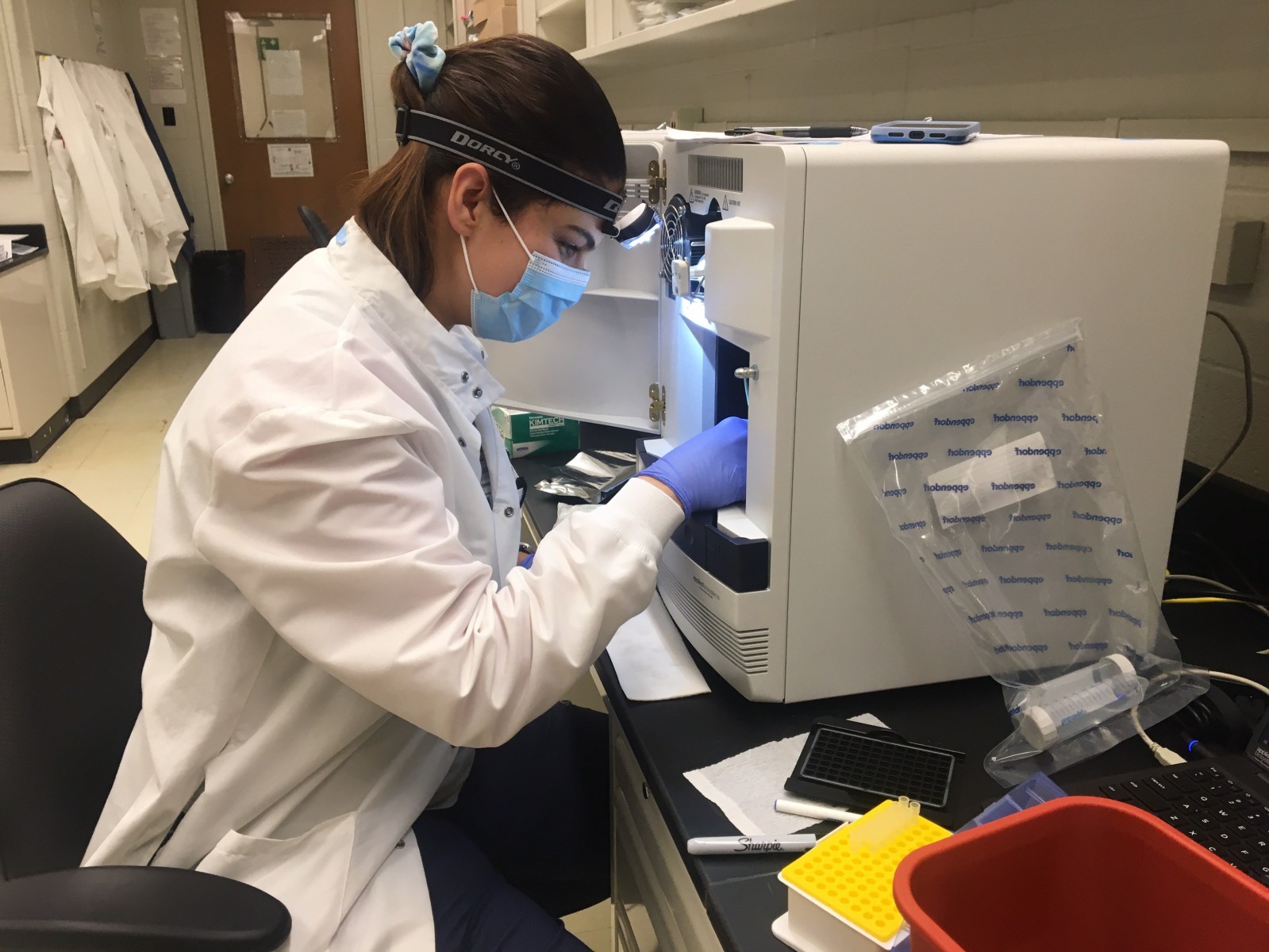
Ohio State’s COVID-19 testing numbers are higher than those of 10 states
Robust testing program has allowed some students to stay on campus, despite pandemic
The Ohio State University is conducting more COVID-19 tests per week than some states.
Last week, the university tested 30,000 people for the novel coronavirus, in an effort to keep open as many classes and campus activities as possible during the global pandemic. Tests are given and processed on campus, allowing for quick results that let contact tracers connect with infected students and help them isolate. On Monday, the university processed its 200,000th test since on-campus processing started on Oct. 26.
The weekly test total is more than 10 states and the United States’ three territories, according to the Centers for Disease Control and Prevention Statistics. It also is about 12% of the total tests conducted last week in the state of Ohio.
“You have people from across all our campuses, all our departments, pulled out of all sorts of jobs to accomplish this one specific goal: getting as many students tested as we could,” said Christy Bertolo, who is part of Ohio State’s COVID-19 implementation team and who has managed on-campus testing at Jesse Owens North, a recreation center the university transformed to a testing site at the start of fall semester.
Though positivity rates had spiked as high as 4 or 5% on campus, they are currently under 0.5%. That is partially indicative of what is happening in the broader society — positivity rates in Franklin County are below 5%. But, according to Seth Faith, strategic alliance officer at Ohio State’s Infectious Diseases Institute, co-director of the Center of Microbiome Science and technical supervisor of the lab that processes COVID-19 tests on campus, it also is a sign that the university’s robust testing and contact tracing programs are working.
Ohio State began testing undergraduate students who lived on campus at the start of fall semester. Initially, the university planned to test a sample of students — about 300 per day — but as the number of positive tests increased over the summer, it became clear that the university would need to expand that testing program in order to operate safely.
The university ramped up testing quickly, expanding it to all students living on campus and opening it to some off-campus students and front-line employees. Those students and employees made appointments for a weekly saliva test at Jesse Owens North; samples were then sent to a private company in New Jersey to process. Each test sample took about 15 minutes to collect and approximately three days to process.
Partway into the fall semester, though, the university began sending tests to Ohio State’s Applied Microbiology Services Lab. The lab needed less saliva; that it was on campus meant tests could also be processed within a day, rather than within three. By the start of spring semester, the AMSL was processing about 85% of Ohio State’s COVID-19 tests.
Earlier this month, the university expanded testing again to include some faculty teaching hybrid classes, said Jessica Buskirk, managing director of Ohio State’s Human Performance Collaborative, and one of the leaders of the university’s on-campus COVID-19 test processing.
“That added another 3,000 to 4,000 people who had the option to be tested,” she said.
Faith said the move to process tests on campus likely will save the university between $30 million and $40 million.
It also cut down on the time students, faculty and staff needed to be at Jesse Owens North for testing. The move to on-campus processing meant a switch in how students schedule their tests, which means students now answer pre-testing questions before they arrive to the testing site. That makes for a faster testing experience: Bertolo said the average time a person spends at the facility for a COVID-19 test is three minutes.
Earlier this month, the lab started bringing testing equipment online that will allow lab technicians to sequence the genomes of viruses in the saliva samples collected on campus. That will allow researchers to identify variants of the COVID-19 virus, and to raise a red flag if they spot one of the variants known to be more contagious.
“Let’s hope we don’t see those more contagious variants here on campus,” said Faith, who is also an adjunct associate professor of microbiology at Ohio State, “but if we do, at least we’ll know.”
Throughout the fall, the university had the capacity to test about 20,000 people per week. Processing tests on campus dramatically increased that figure: The university now has the capacity to test about 45,000 people per week. Bertolo and Buskirk said hitting full capacity is not ideal; the university likely will process, at the most, about 35,000 tests per week.
Robust testing and contact tracing have also created opportunities for students interested in science and public health: The AMSL employs about 70 people, mostly undergraduate, graduate, postdoctoral and medical students, to process and analyze tests. Each student goes through a rigorous two- to four-week training period and must pass tests on each lab procedure.
“This is professional work they are performing, highly complex and demanding,” Faith said.
The Jesse Owens North testing facility employs about 100 students to collect saliva samples from their peers. “Our student workers at Jesse Owens North have been amazing, and they’re cheerleaders to the other students, encouraging them to get tested and thanking them for getting tested.”
Processing tests on campus, and increasing the number of tests available, involved a number of departments and people on campus who don’t often work together, including researchers, business liaisons, IT professionals from the Ohio State Wexner Medical Center and others.
Faith called the university’s COVID-19 testing program “an organizational success story.”
“I’ve been contacted by no less than 50 organizations, most of those universities of different sizes,” he said. “And we’ve been able to help many of them improve their own programs.”

